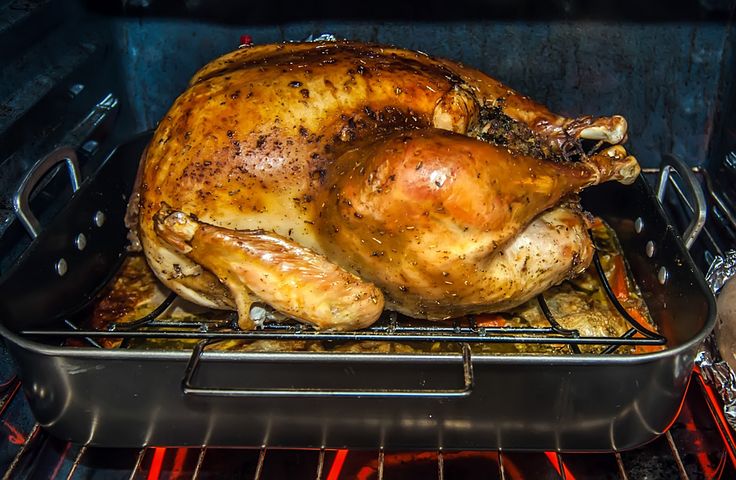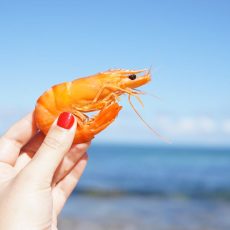
swrm is here to challenge you to make this year’s Thanksgiving your most sustainable one yet! While 2020 may not seem a year to entirely be thankful for, we’re thankful for everyone who is taking COVID-19 precautions–which for Thanksgiving especially means following your region’s travel and gathering restrictions. To put it in perspective, 51 Million Americans used to travel for Thanksgiving and airports were extremely crowded and not exactly COVID safe. So, please be mindful of your travel plans and ensure that the people at your Thanksgiving table have taken the proper precautions. If we all work together to follow proper COVID protocols, we will all be so thankful to celebrate 2021–which is just around the corner! Moreover, here are some tips to implement in your 2020 Thanksgiving to make it a joyful, plentiful, and sustainable one:
1. Look Locally for the Turkey

A roast turkey centerpiece for your gorgeous Thanksgiving table is a quintessential part of Thanksgiving. In fact, the National Turkey Federation found 88% of Americans eat turkey on Thanksgiving. Don’t fret, I am not here to say do not buy your Thanksgiving turkey but, rather, think about where you get your 15 pound turkey for the holiday. Try to find a turkey from a local supplier instead of one raised in a factory farm. Purchasing a turkey from a local supplier will support sustainable farming and will keep money out of large, commercial farming companies. “Locally grown” means the item is grown and harvested within 100 miles of the location where it is served; thus, the food is transported over much shorter distances which equals fewer emissions from transport.
2. Base Your Menu on What Produce is in Season

Along with tip #1, the vegetables that are in season are the ones that are grown locally. Grocery shopping for local produce will impact the environment less. In fact, local produce contains more nutrients since it is not exposed to chemicals, gasses, or waxes used to preserve food over the long distance it travels. Local food is also picked at its peak ripeness and freshness, unlike grocery store produce that is picked before it is fully ripe, so it will not rot before it arrives to the grocery store. Local produce may appear cost-prohibitive but just buying a couple items at your local, organic grocery store will make a difference.
Do you know what is on your Thanksgiving menu, yet? Well, think what food is in season in your area. Currently sweet potatoes, parsnips, carrots, apples, brussels sprouts, and pumpkins are all in season in Fall’s cooler climate and would add tasty options to your Thanksgiving menu.
3. Mindfulness In and Out of the Dining Room

Thanksgiving is a day of food abundance and, unfortunately, food waste. Being mindful of your Thanksgiving menu and food consumption will reduce eating in excess and food waste, as well. Food waste releases the greenhouse gas methane, which absorbs infrared radiation from the sun and traps heat that contributes to global warming. When choosing your menu, perhaps you do not need to serve prime rib in addition to your turkey, or apple pie along with pumpkin pie, or roasted carrots and roasted brussels. You get the gist—try to have a purposeful menu, that you will enjoy. When feasting, mindfulness will help remind you that you may already be full, so this year you will not have to leave your Thanksgiving meal feeling overly stuffed. Plus, there will be more tasty leftovers for you to enjoy!
Mindfulness also applies to taking a moment to enjoy the outdoors. Connecting with the environment, breathing in fresh air, and seeing sunshine will improve your mood. Research has shown how the outdoors has positive impacts on your mood. With the chaos and uncertainty of 2020, remember that immersing yourself outdoors can help relieve stress and sadness.
4. Get Creative with Leftovers

Microwaving leftovers straight out of your refrigerator is the easiest route, but there are many other options. You can compost any food that has gone bad, as well as inedible food like egg shells leftover from your pie crust or potato peels leftover from your mashed potatoes. Composting recycles the nutrients in food and helps soil used for agriculture retain water and nutrients. Want a compost bin? Here is one which you can put in your freezer to store your food scraps. When the compost bucket is full, you bring it to a compost collection near you or dump in your municipal compost trash bin outside, if available. Besides composting, you can also freeze the leftovers that you can not eat right away and find creative recipes to spice them up, like a yummy kale and sweet potato frittata or carrot pot pie. Or for individuals like me, who are not the most talented of chefs, you can make a simple but delicious cranberry, brie, and turkey sandwich. Have fun here!
Leftovers are also for everyone, so try to divide the leftovers among your Thanksgiving guests. This way everyone can enjoy the leftovers and the food waste will hopefully be non-existent in your 2020 Thanksgiving.
5. Responsible Water Use
Due to geologically extreme weather conditions, the input and output of water are not equal because there is either an abundance of freshwater or a shortage of water. Be responsible with water use, especially on holidays like Thanksgiving when the dishwasher, hand-washing, cooking, cup-filling, and cleaning require more than the average amount. Some advice is to make sure tap-water is not mindlessly running but only on when you are currently using it. Also, to reduce plastic waste and chemicals from plastic bottles, try not to serve bottled water. Instead, use your tap water or you can get a Brita to filter your tap water.
Being mindfully sustainably of our one planet doesn’t have to be difficult so let’s start this year with your most satisfying, locally produced Thanksgiving meal yet.
For more tips check out last year’s Thanksgiving Sustainable Tips!





This was an interesting read. I never knew how much I can help the environment just by changing where I bought my Thanksgiving food. This article was very useful. Can not wait to try these helpful tips out.
Hi Tyler! Great to hear that you found the article useful! Thank you for that feedback. I’m sure you’re applying some of the same tips to the Holidays too. Stay safe and sustainable!
I learned so many useful things about shopping and selecting items for my Thanksgiving dinner. I will not prepare to many options but a varied menu that I know my guests enjoy. Due to the present restrictions on the guest list I will make sure I make just enough to have few leftovers. I never thought about saving the potato peel, egg shells etc to use in my garden. Thank you for giving me a guide on selecting items and preparing a meal that we will enjoy
Hi Zanda! Fantastic to hear that you got great tips from this article! I’m sure you had a wonderful Thanksgiving – and your garden enjoyed the spoils of your kitchen scraps! 😉 Stay safe and sustainable!